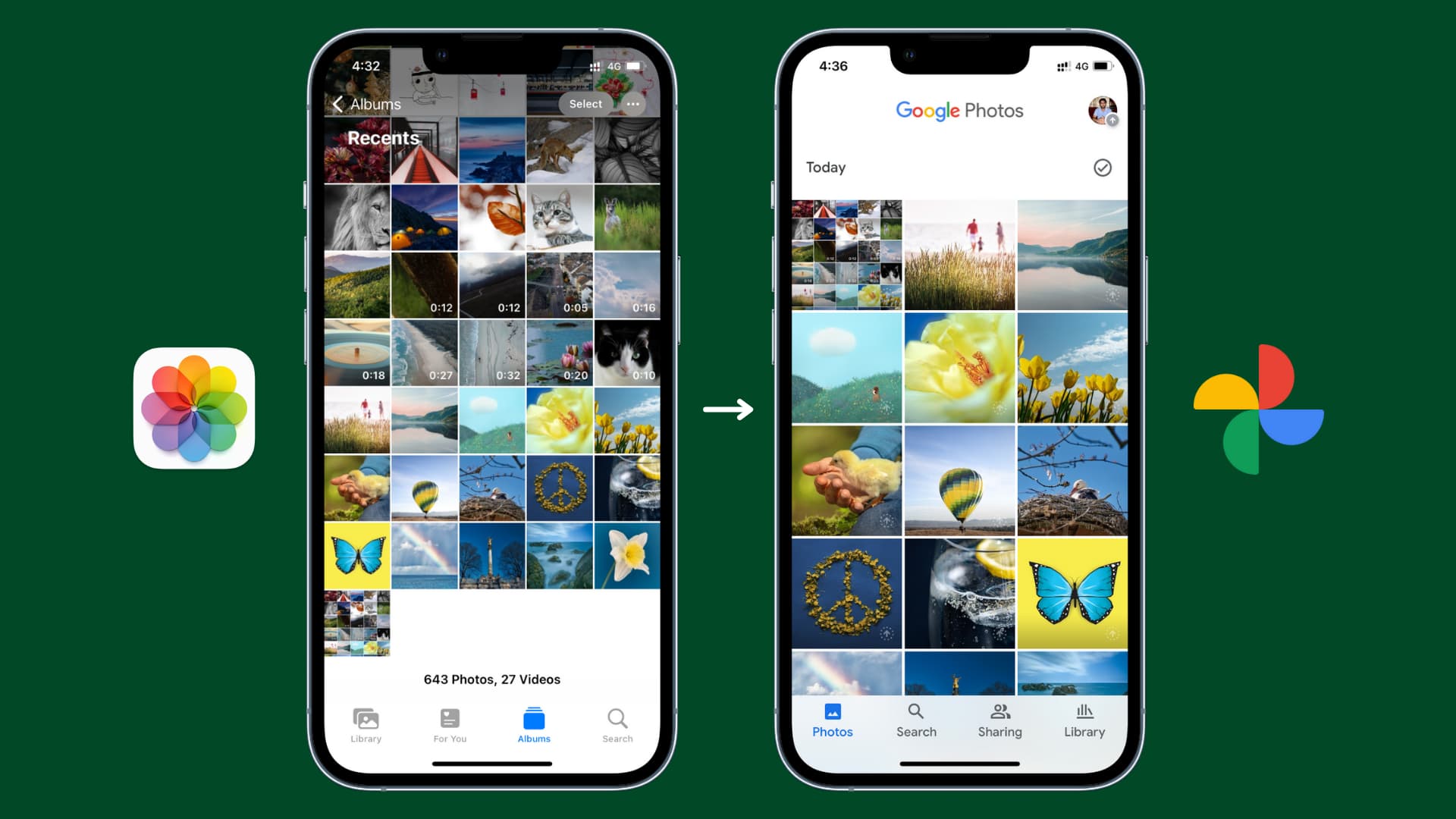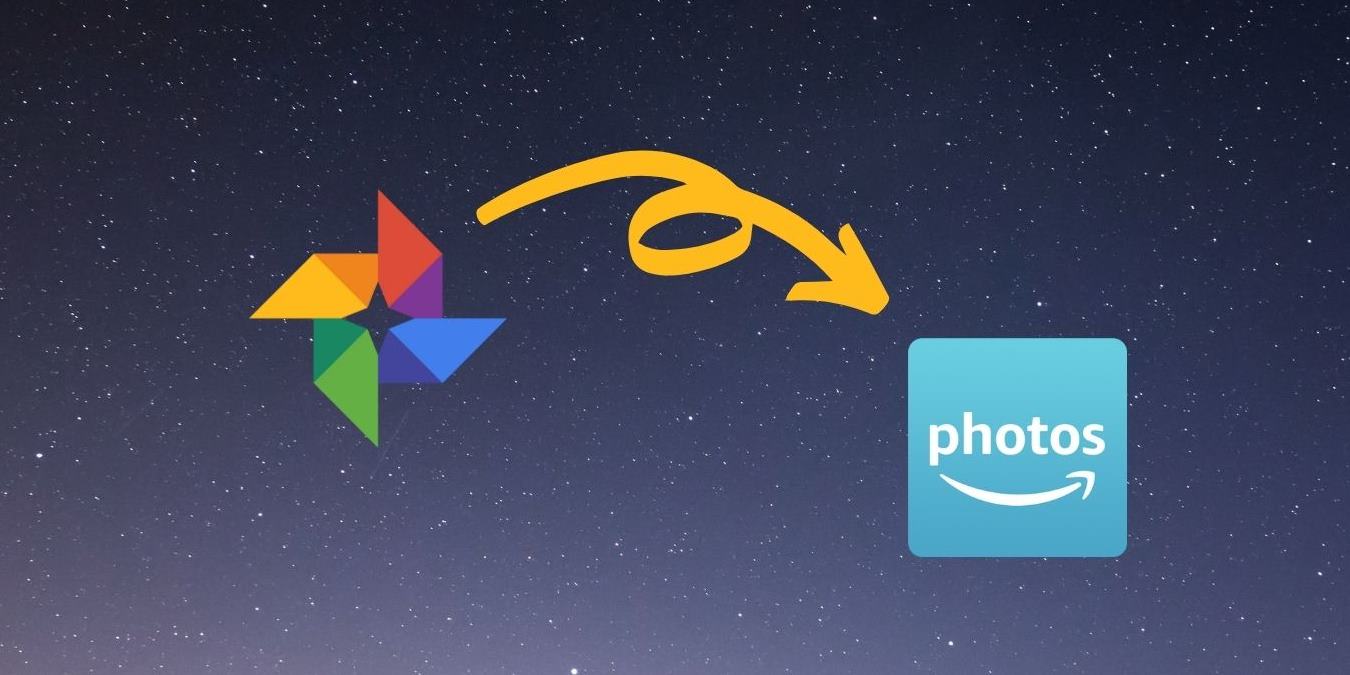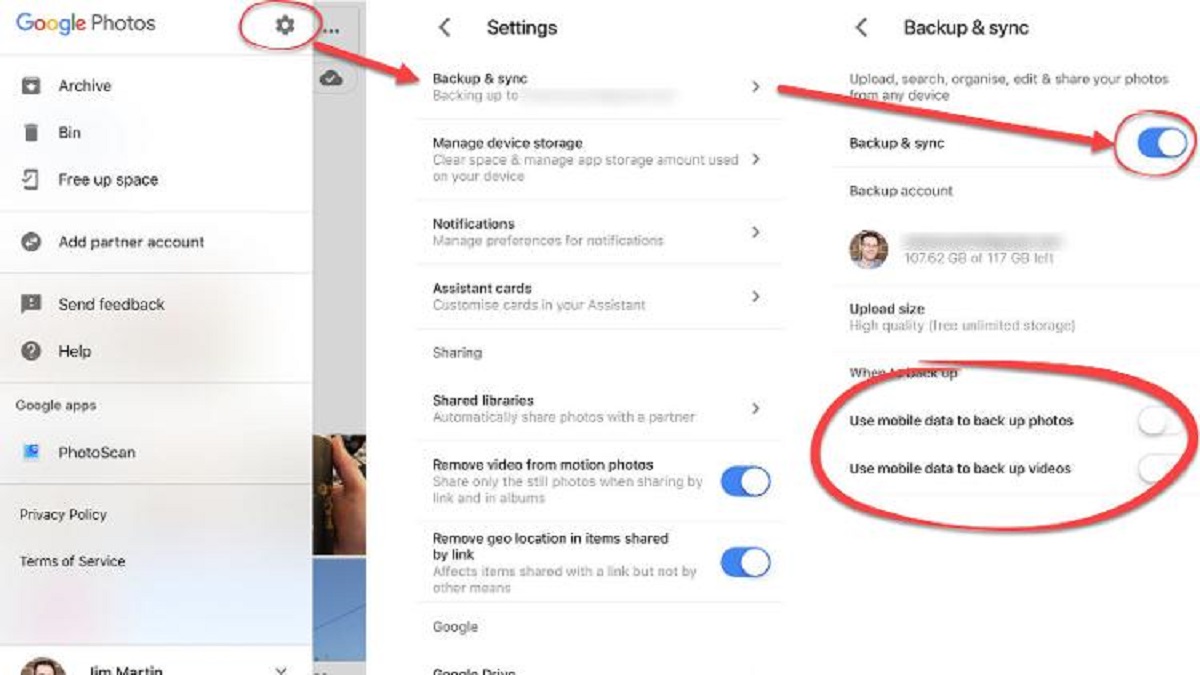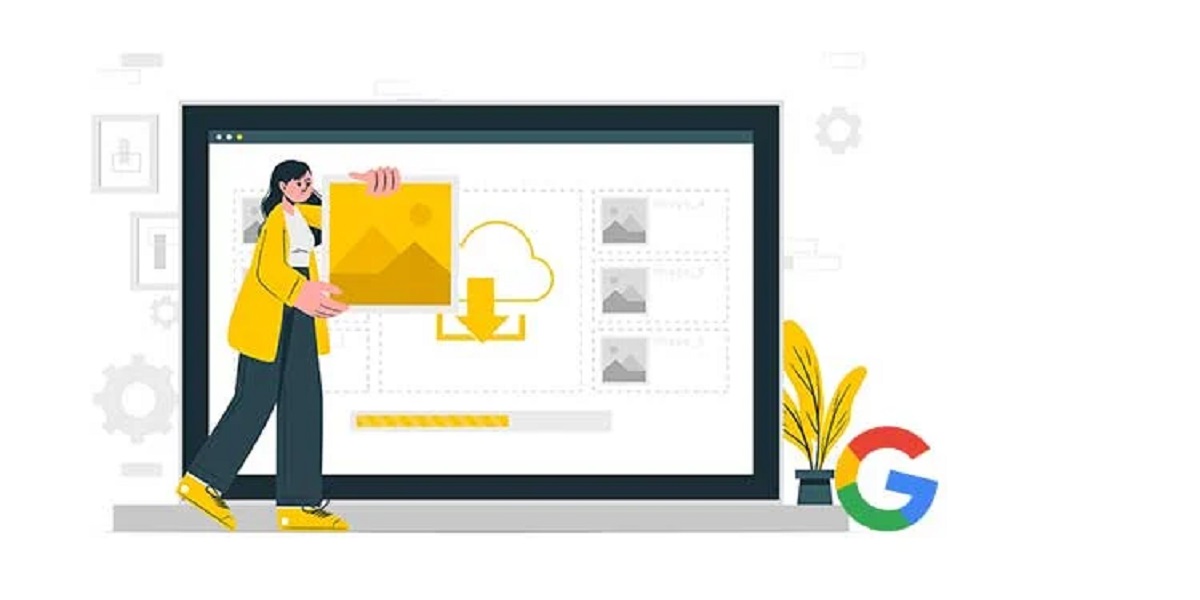Introduction
Welcome to the captivating world of Google Photos! In this digital age, we capture countless moments through the lens of our smartphones and cameras. But with the ever-increasing number of photos, it can be overwhelming to organize and manage them all. That’s where Google Photos comes to the rescue.
Google Photos is a popular cloud-based platform that allows you to store, organize, and share your photos and videos. It offers a range of features that make it easy to find your treasured memories, create stunning collages and albums, and even automatically back up your photos.
Whether you’re a photography enthusiast, a casual smartphone snapper, or a professional capturing life’s precious moments, Google Photos provides a user-friendly interface and powerful tools that simplify the process of managing your photo library.
With its seamless integration across devices and platforms, Google Photos ensures that your photos are securely stored and easily accessible whenever and wherever you need them. Whether you’re using an Android device, an iPhone, or a computer, you can access your entire photo collection with just a few clicks.
During this article, we will explore the inner workings of Google Photos, uncover its storage capabilities, and delve into the various ways you can manage and organize your growing collection of photos. So, let’s dive in and discover the wonders of Google Photos!
Understanding Google Photos
Before we dive into the details of how Google Photos stores and manages your photos, let’s take a moment to understand what it actually is. Google Photos is a cloud-based photo and video storage service provided by Google. It allows users to store their photos and videos in the cloud, access them from any device with an internet connection, and share them with others.
One of the standout features of Google Photos is its ability to automatically organize and categorize your photos. Using advanced algorithms, Google Photos can recognize faces, objects, and even specific events in your photos. This means you can easily search for specific people, objects, or places within your vast collection of memories.
In addition to its organizing capabilities, Google Photos offers a range of editing tools to enhance your photos. From simple adjustments like cropping and applying filters, to advanced options like adjusting exposure and adding text, you can bring your photos to life with just a few clicks.
Another notable feature of Google Photos is its intelligent assistant. This feature automatically creates animations, collages, and even movies using your photos and videos. It can also create albums based on specific events or trips, saving you the time and effort of manually organizing your memories.
Google Photos also provides a hassle-free way to share your photos and videos with others. You can easily create and share albums, send links to specific photos or videos, and even invite others to contribute to a shared album. This makes it perfect for collaborating on projects, sharing memories with friends and family, or simply showcasing your photography skills.
Now that we have a better understanding of what Google Photos is and what it can do, let’s explore how it stores and manages your precious photos and videos.
How Does Google Photos Store Photos?
Google Photos utilizes a cloud-based storage system to securely store and manage your photos and videos. When you upload your photos to Google Photos, they are stored in your Google account’s cloud storage space. This means you can access your photos from any device with an internet connection.
Google Photos offers two options for storing your photos: the “High Quality” and “Original Quality” settings. When you choose the “High Quality” option, Google Photos automatically compresses your photos to save storage space without significantly reducing their quality. This is the recommended option for most users as it provides unlimited free storage for photos up to 16 megapixels and videos up to 1080p resolution.
If you choose the “Original Quality” option, Google Photos will store your photos and videos in their original resolution and quality. However, keep in mind that this option may count towards your Google account’s storage limit. Google provides 15 GB of free storage space across Gmail, Google Drive, and Google Photos, and additional space can be purchased if needed.
To ensure the security of your photos, Google Photos employs strong encryption measures. This means that your photos are protected from unauthorized access and are stored in multiple data centers to prevent data loss.
One of the key advantages of using Google Photos is its intelligent search capabilities. Google Photos uses machine learning algorithms to analyze the content of your photos and automatically categorize them based on people, places, and objects. This makes it incredibly easy to search for specific photos, whether it’s by typing keywords or using natural language queries.
In addition to search functionality, Google Photos also offers a powerful organization system. Your photos can be organized into albums, which can be manually created or automatically generated based on specific events or themes. This makes it convenient to group related photos together and quickly find them when needed.
Now that we understand how Google Photos stores and organizes your photos, let’s explore the limitations of free storage and how it affects different types of uploads.
Free Storage Limit
Google Photos offers free storage for your photos and videos, but it’s important to understand the limitations of this free storage and how it can impact your usage.
By default, Google Photos provides unlimited free storage for photos up to 16 megapixels and videos up to 1080p resolution when you select the “High Quality” option. This compression algorithm allows you to store a large number of photos without using up your Google account’s storage space. It’s worth noting that compressed photos may have a slight reduction in quality, although it’s generally not noticeable for most users.
However, if you choose the “Original Quality” option when uploading your photos, they will count towards your Google account’s storage limit. Google offers 15 GB of free storage space across Gmail, Google Drive, and Google Photos. Once you exceed this limit, you may need to purchase additional storage from Google to continue uploading photos and videos at their original quality.
In addition to the storage limitations, there is also a restriction on the maximum file size for individual photos and videos. For photos, the maximum file size is 75 MB, while for videos, it’s capped at 10 GB. If you have files that exceed these limits, you may need to compress or reduce their resolution before uploading them to Google Photos.
It’s important to note that the free storage provided by Google Photos is shared across all Google services. This means that the storage space you use in Gmail, Google Drive, and other Google services will count towards your total storage limit. If your Google Photos storage is nearing its limit, you may need to free up space by deleting unnecessary files or consider upgrading to a paid Google One subscription for additional storage.
It’s also worth mentioning that photos and videos uploaded before June 1, 2021, using the “High Quality” setting do not count towards your storage limit. So if you’ve been using Google Photos for a while, you may have a considerable amount of free storage available.
Understanding the free storage limit in Google Photos is crucial to ensure that you can continue enjoying the benefits of this platform without any storage constraints. By managing your storage wisely and considering the storage options available, you can make the most out of your Google Photos experience.
Photos Backed Up from a Phone
One of the primary uses of Google Photos is to back up your photos and videos from your phone. Once you’ve installed the Google Photos app on your smartphone, you can easily set it up to automatically back up your photos and videos to the cloud.
When you enable the backup feature in Google Photos, it will upload your photos and videos from your phone’s camera roll to your Google account’s cloud storage. This ensures that even if you accidentally lose or damage your phone, your precious memories will be safely stored and accessible from any device.
The backup process can be customized to suit your preferences. You can choose to back up your photos and videos using either the “High Quality” or “Original Quality” setting, depending on your desired storage and quality requirements.
For most users, the “High Quality” option is recommended, as it offers unlimited free storage for photos up to 16 megapixels and videos up to 1080p resolution. This allows you to store a vast collection of photos without consuming your Google account’s storage space.
When you back up your photos and videos, they are organized chronologically in the Google Photos app. You can easily browse through your entire camera roll or use the search functionality to locate specific photos based on dates, locations, or even the objects or people in the pictures.
Once your photos are backed up and stored in the cloud, you can access them from any device with an internet connection. Whether you’re using a different smartphone, tablet, or computer, you can simply log in to your Google account and view or download your photos and videos from the Google Photos website or app.
It’s worth noting that when you delete a photo or video from your phone’s camera roll, it will not be immediately deleted from your Google Photos library. By default, deleted photos are kept in the Trash folder for 60 days, providing an additional layer of safety in case of accidental deletions. However, if you want to free up space in your Google account’s storage, you can manually empty the trash to permanently delete the photos and videos.
Backing up your photos from your phone to Google Photos ensures that your memories are safe and accessible. It provides peace of mind knowing that even if you lose your phone or encounter any issues, your cherished moments are securely stored in the cloud.
Photos Uploaded from a Computer or Tablet
In addition to backing up photos from your phone, Google Photos also allows you to upload and store photos from your computer or tablet. This feature is especially useful if you have a collection of photos on your computer that you want to keep safely stored and accessible from anywhere.
To upload photos from your computer or tablet to Google Photos, you can use either the Google Photos website or the Google Photos app. Here’s how you can do it:
Using the Google Photos website:
- Open the Google Photos website in your browser and log in to your Google account.
- Click on the “Upload” button, usually located at the top-right corner of the screen. You can either select files individually or choose a folder containing multiple photos to upload.
- Once you’ve selected the photos, click on the “Open” or “Upload” button to start the upload process.
- Google Photos will begin uploading your selected photos to your Google account’s storage, and you’ll be able to access and manage them from any device.
Using the Google Photos app:
- Open the Google Photos app on your computer or tablet.
- Sign in to your Google account if you haven’t already.
- Click on the “Upload” button, usually in the toolbar or menu of the app.
- Select the photos or folders you want to upload from your computer or tablet.
- Click on the “Open” or “Upload” button to begin the upload process.
Regardless of the method you choose, Google Photos will upload your selected photos to your Google account’s storage. The photos will then be available for viewing and management on any device that has access to your Google account.
Once your photos are uploaded, Google Photos will automatically organize and categorize them based on date, location, and content. This makes it easy to search for specific photos or browse through your collection in a seamless manner.
When uploading photos from a computer or tablet, you also have the option to choose between the “High Quality” and “Original Quality” settings. Just like when uploading from a phone, the “High Quality” option allows for unlimited free storage for compressed photos up to 16 megapixels and videos up to 1080p resolution. If you choose the “Original Quality” option, the photos will count towards your Google account’s storage limit.
With the ability to upload photos from your computer or tablet, Google Photos provides a versatile solution for storing and managing your entire photo collection, regardless of the source.
Photos Shared with You
Google Photos offers a seamless way to share and collaborate on photos with others. When someone shares photos with you through Google Photos, you can easily access and view them from your own account.
When someone shares photos or albums with you, you will receive a notification in your Google Photos app or via email, depending on your notification settings. You can simply click on the notification to view the shared photos or access them from the “Sharing” tab in the Google Photos app or website.
Shared photos are organized in the “Shared” tab, making it easy to keep track of all the photos that have been shared with you. From there, you can browse through the shared albums, view individual photos, and even leave comments or likes.
Shared photos do not count towards your own storage limit in Google Photos. However, if you choose to add shared photos to your library or make a copy of them, they will count towards your storage quota.
One of the advantages of sharing photos through Google Photos is the flexibility it offers. You can choose to share photos with specific individuals or create shared albums where multiple people can contribute their photos. This makes it ideal for sharing experiences, collaborating on projects, or simply reliving memories with friends and family.
When someone shares photos with you, you can also choose to add them to your own library if you want to have a copy of the photos in your own collection. This can be useful if you’re collaborating on a project or simply want to keep all your shared and personal photos in one place.
If you no longer want to see the shared photos in your Google Photos app, you have the option to remove them from your library. This will not affect the original photos or albums shared by the owner, but only remove them from your personal view.
Google Photos also allows you to easily share photos with others. You can create shared albums and invite others to contribute their photos, or simply send direct links to specific photos or albums. This makes it convenient to share your photos with friends, family, or colleagues, even if they don’t have a Google Photos account.
With the ability to share and view photos seamlessly, Google Photos provides a versatile solution for collaboration and sharing memories with your loved ones.
Photos Shared by You
Google Photos not only allows you to view and access photos shared with you, but also gives you the ability to share your own photos and albums with others. Sharing photos through Google Photos is a convenient and efficient way to showcase your favorite moments and memories with friends, family, or colleagues.
To share photos with others, simply select the photos or albums you want to share and click on the share button. From there, you can choose to share via email, messaging apps, social media platforms, or directly with specific individuals.
When sharing photos, you have the option to create shared albums where multiple people can contribute their photos. This makes it easy to collaborate on events, trips, or projects, as everyone can add their own photos and create a collective memory.
Shared albums can be accessed by the people you invite, and they can view, add, and comment on the photos within the album. This interactive sharing experience allows for a collaborative and engaging way to share and relive memories together.
When you share photos or albums through Google Photos, the recipients can view them even if they don’t have a Google Photos account. This makes it convenient to share your photos with anyone, regardless of their device or platform.
One of the advantages of sharing photos through Google Photos is the ability to control the privacy and sharing settings. Before sharing, you can choose whether the recipients can only view the photos or have the ability to contribute and add their own photos to the shared album.
If you want to revoke access to the shared photos or albums, you can easily stop sharing or remove individuals from the shared album. This ensures that you have full control over who can access your photos and albums at any given time.
In addition to sharing photos directly with individuals, you can also generate links to specific photos or albums and share them with others. This is particularly useful when you want to share a specific photo or a curated album on social media or other platforms.
By using Google Photos to share your photos, you can easily showcase your favorite moments, collaborate with others, and create lasting memories together. The flexible sharing options and privacy settings give you full control over how and with whom you share your treasured photos and albums.
Photos from Google Drive
In addition to directly uploading and sharing photos within Google Photos, you can also access and manage photos stored in your Google Drive. The integration between Google Drive and Google Photos allows you to easily navigate between the two platforms, making it seamless to work with photos stored in either location.
If you have photos stored in Google Drive, you can access them in Google Photos by simply opening the app or website and selecting the “Google Drive” tab. From there, you can view and manage your photos just like any other photo in your Google Photos library.
When viewing photos from Google Drive in Google Photos, you can also take advantage of all the features and functions that Google Photos offers. This includes search capabilities, editing tools, and the ability to create albums or share the photos with others.
The integration between Google Drive and Google Photos is particularly useful if you have a large number of photos stored in Google Drive or if you already use Google Drive as your primary storage solution. It allows you to have all your photos in one place, making it easier to manage and organize your entire collection.
It’s important to note that while the photos stored in Google Drive can be viewed in Google Photos, any changes made to the photos in Google Drive will not be reflected in Google Photos. Similarly, edits made to photos in Google Photos will not be applied to the version stored in Google Drive. This ensures that your photos remain intact and unaffected by any modifications made in one platform.
When it comes to sharing photos from Google Drive, you have the flexibility to share individual photos or entire folders with others. If you share a photo from Google Drive using a direct link, the recipient can access and download the photo even if they don’t have a Google account.
By utilizing the combination of Google Drive and Google Photos, you have a comprehensive solution for storing, organizing, and sharing your photos. Whether you prefer using Google Drive as your primary storage or you want to access specific photos stored in Google Drive, the seamless integration between the two platforms provides a convenient and efficient workflow.
Checking the Number of Photos in Google Photos
Curious about how many photos you have stored in Google Photos? Fortunately, Google Photos provides easy ways to check the number of photos in your library, whether you’re using the Google Photos app or the website.
Using the Google Photos App:
To check the number of photos in Google Photos using the app, follow these steps:
- Open the Google Photos app on your device and sign in to your Google account, if necessary.
- On the app’s home screen, look for the icon with three horizontal lines (also known as the “hamburger menu”) in the top-left corner and tap on it.
- In the menu that appears, tap on “Settings”.
- Scroll down and tap on “Library & device folders”.
- Under “Photos on device”, you will find the total number of photos and videos available in your Google Photos library.
Using the Google Photos Website:
If you prefer checking the number of photos in Google Photos on the website, here’s what you should do:
- Open your preferred web browser and visit the Google Photos website.
- Sign in to your Google account, if necessary.
- On the left side of the page, you will find the navigation panel. Click on “Photos” to view your photo library.
- In the top-right corner, next to the search bar, you will see the total number of photos and videos available in your Google Photos library.
By following these simple steps, you can easily check the number of photos and videos stored in your Google Photos library. This can be particularly useful if you’re organizing and managing your photo collection or simply curious about the size of your digital memories.
Using the Google Photos App
The Google Photos app is a powerful tool that allows you to access, organize, and manage your photos and videos with ease. Available for both Android and iOS devices, the app offers a user-friendly interface and a wide range of features to enhance your photo viewing and sharing experience.
Here are some key features and functionalities of the Google Photos app:
1. Automatic Backup: The app can automatically back up your photos and videos to your Google account’s cloud storage. This ensures that your precious memories are safe and accessible from any device with an internet connection.
2. Photo Organization: Google Photos uses advanced algorithms to automatically organize your photos. It can recognize and categorize photos based on faces, objects, places, and events. This makes it easy to search for specific photos or browse through your collection based on various criteria.
3. Editing Tools: The app provides a range of editing tools to enhance your photos. You can crop, rotate, apply filters, adjust brightness and contrast, and even remove unwanted objects from your photos. These editing features allow you to customize and enhance your images without the need for additional editing apps.
4. Assistant: The Assistant feature in Google Photos offers intelligent suggestions and automated creations based on your photos. It can create collages, animations, movies, and even albums based on specific events or trips. This feature adds a touch of creativity and convenience to your photo management experience.
5. Sharing Options: The app allows you to easily share your photos and albums with others. You can create shared albums and invite friends or family members to contribute their own photos. Additionally, you can generate shareable links to specific photos or albums and send them to anyone, even if they don’t have a Google Photos account.
6. Device Sync: The app seamlessly syncs your photos across all your devices. Whether you take a photo on your phone, tablet, or computer, it will automatically appear in the Google Photos app on all your connected devices. This ensures that you have access to your entire photo library no matter which device you’re using.
7. Easy Printing and Photo Products: Through the app, you can order prints, create photo books, and other personalized photo products directly from Google Photos. This feature allows you to bring your digital memories to life and have them in a physical format.
The Google Photos app offers a comprehensive photo management solution with its robust features and seamless integration across devices. Whether you’re looking to back up your photos, organize your photo library, or share memories with loved ones, the app provides a user-friendly experience and powerful tools to meet your needs.
Using the Google Photos Website
The Google Photos website provides a versatile platform for managing and organizing your photos and videos directly from your computer. With its user-friendly interface and comprehensive features, the website allows you to access your entire photo library and perform various actions with ease.
Here are the key features and functionalities of using the Google Photos website:
1. Access to Photos: The website gives you direct access to all the photos and videos stored in your Google Photos library. You can view your entire collection in one place, making it easy to browse through your memories.
2. Search and Filters: The search functionality of Google Photos is powerful and convenient on the website. You can search for photos by date, location, facial recognition, or even specific keywords. Additionally, you can apply filters to quickly find photos based on certain criteria, such as photos from a specific date range or with specific people in them.
3. Editing Tools: The website provides a range of editing tools to enhance your photos. You can adjust brightness, contrast, saturation, and other settings, crop and rotate photos, apply filters, and even remove unwanted objects. These editing options allow you to enhance your photos right within the Google Photos website.
4. Organizing Albums and Collections: You can create albums and collections to organize your photos and videos. Albums allow you to group related photos together, while collections provide a higher-level organization that can contain multiple albums. This feature simplifies the process of organizing and managing your photo library.
5. Sharing and Collaboration: The website offers various options for sharing your photos and albums. You can create shareable links to individual photos or albums and send them to others, even if they don’t have a Google Photos account. Additionally, you can invite others to contribute to shared albums, making it easy to collaborate and collect memories from different perspectives.
6. Slideshows and Presentations: With the Google Photos website, you can create stunning slideshows and presentations using your photos. Simply select the photos you want to include and choose the Slideshow or Presentation option. This feature allows you to share your photos in a dynamic and engaging way.
7. Printing and Photo Products: The website provides an easy way to order prints, create photo books, and other personalized photo products directly from Google Photos. This feature allows you to bring your digital memories into the physical realm and create tangible keepsakes of your precious moments.
8. Integration with Google Drive: The Google Photos website seamlessly integrates with Google Drive, allowing you to access and manage your photos stored in Google Drive. This integration enables a unified experience and makes it convenient to work with your photos across platforms.
The Google Photos website offers a comprehensive and user-friendly platform for managing and organizing your photos and videos. Whether you’re uploading new photos, organizing your collection, or sharing memories with others, the website provides a versatile and efficient workflow straight from your computer.
Organizing and Managing Google Photos
Google Photos offers a range of powerful tools and features to help you efficiently organize and manage your vast collection of photos and videos. With its intuitive interface and intelligent algorithms, you can easily find, sort, and curate your memories with ease.
Here are some key tips for organizing and managing your Google Photos:
1. Albums and Collections: Create albums to group related photos together. You can easily create albums based on specific events, trips, or themes. For a higher-level organization, use collections to group multiple albums together. This allows for a more structured and organized photo library.
2. Labels and Tagging: Google Photos utilizes advanced algorithms to recognize people, objects, and locations in your photos. Take advantage of these automated features by labeling and tagging people, objects, or places in your photos. This makes it easier to search for specific photos or filter your collection based on specific criteria.
3. Search Functionality: Utilize the powerful search functionality of Google Photos to find specific photos or videos. You can search based on keywords, dates, locations, or even specific objects or people in the photos. By mastering the search capabilities, you can quickly find the photos you’re looking for.
4. Editing Tools: Google Photos provides a range of editing tools to enhance your photos. Whether you want to adjust the brightness, contrast, or saturation, or apply filters or special effects, these editing tools allow you to customize your photos to your liking, all within the Google Photos platform.
5. Automatic Creations: Take advantage of the Assistant feature in Google Photos, which creates automatic creations such as collages, animations, movies, and albums from your photos. This feature adds a touch of creativity to your photo collection and saves you time by automating the creation process.
6. Sharing and Collaboration: Google Photos enables easy sharing and collaboration with others. Whether it’s creating shared albums where others can contribute their photos or generating shareable links to specific photos or albums, these features allow you to relive memories with loved ones and collaborate on projects or events.
7. Keep it Clean: Regularly review your photo library and remove any unwanted or duplicated photos. This helps keep your library organized and prevents clutter. Utilize the “Trash” feature to temporarily store photos before permanently deleting them.
8. Storage Management: Keep an eye on your storage usage in Google Photos. If you’re approaching your storage limit, consider deleting or archiving photos that are no longer needed or consider upgrading to a premium storage plan offered by Google to increase your storage capacity.
With these tips and features, you can efficiently organize and manage your Google Photos library. Take advantage of the automated features, powerful search capabilities, and sharing options to maximize the value of your photo collection and create a personalized and accessible digital archive of your memories.
Deleting Photos from Google Photos
Managing your photo collection also involves deleting photos that are no longer needed or that you want to remove from your Google Photos library. Google Photos provides a straightforward process for deleting photos, whether you want to remove individual photos or delete entire albums. Here’s how you can delete photos from Google Photos:
Deleting Individual Photos:
- Open the Google Photos app or visit the Google Photos website on your computer.
- Navigate to the photo you want to delete.
- Tap or click on the three-dot menu icon located in the top-right corner of the photo.
- From the menu that appears, select the “Delete” option.
- Confirm the deletion when prompted.
Removing Photos from Albums:
- Open the Google Photos app or visit the Google Photos website.
- Go to the album that contains the photos you want to remove.
- Tap or click on the three-dot menu icon located in the top-right corner of the album.
- Select the “Edit album” option.
- Deselect the photos you want to remove from the album.
- Tap or click on the “Done” button to save the changes.
Deleting Entire Albums:
- Open the Google Photos app or visit the Google Photos website.
- Go to the album you want to delete.
- Tap or click on the three-dot menu icon located in the top-right corner of the album.
- Select the “Delete album” option.
- Confirm the deletion when prompted.
It’s worth noting that when you delete a photo from Google Photos, it is moved to the “Trash” folder rather than being permanently deleted immediately. This provides a safeguard in case you accidentally delete a photo. Deleted photos remain in the Trash folder for 60 days before being permanently deleted. If you change your mind, you can restore a deleted photo from the Trash folder within the 60-day window.
To permanently delete photos from the Trash folder:
- Open the Google Photos app or visit the Google Photos website.
- Tap or click on the Library icon to access the navigation panel.
- Select the “Trash” option.
- Tap or click on the photo you want to permanently delete.
- Tap or click on the delete icon (usually represented by a trash can) to permanently delete the photo.
- Confirm the deletion when prompted.
It’s important to exercise caution when deleting photos from Google Photos, especially if you’re deleting photos that are also stored locally on your device. Take care to ensure that you have backups or copies of any photos that you want to retain before permanently deleting them.
By effectively deleting photos that are no longer needed, you can keep your Google Photos library organized and maintain a streamlined collection of your most cherished memories.
Utilizing Google Photos to its Full Potential
Google Photos offers numerous features and functionalities that can enhance your photo management experience. By utilizing these tools to their fullest potential, you can maximize the value and convenience of Google Photos. Here are some tips to help you make the most out of the platform:
1. Enable Automatic Backup: Take advantage of the automatic backup feature in Google Photos. This ensures that your photos and videos are always securely stored in the cloud, providing peace of mind and easy access to your memories from any device.
2. Leverage Search Functionality: Explore the robust search capabilities of Google Photos. Use keywords, dates, locations, or even objects to search for specific photos or browse through your collection. Experiment with different search terms to quickly locate the memories you’re looking for.
3. Organize with Albums and Labels: Create albums to group related photos together and use labels and tags to further categorize your photos based on people, objects, or places. This allows for efficient organization and quick retrieval of specific photos.
4. Explore Assistant Suggestions: Pay attention to the suggestions and automated creations offered by the Assistant feature. Google Photos can create collages, animations, movies, and albums from your photos. Embrace these creative suggestions and let Google Photos surprise you with unique memories.
5. Collaborate with Shared Albums: Engage in collaboration by creating shared albums. Invite friends, family, or colleagues to contribute their photos, making it easy to collect and create shared memories. It’s a great way to collaborate on events, projects, or trips while creating a collective experience.
6. Customize and Enhance Photos: Experiment with the editing tools available within Google Photos. Adjust brightness, contrast, saturation, or apply filters to enhance your photos. Explore the different editing options to make your photos truly stand out.
7. Share and Showcase Your Memories: Utilize Google Photos to share your favorite photos and albums with others. Generate shareable links or invite others to contribute to shared albums. It’s a wonderful way to relive memories together and make your photos accessible to friends, family, and social networks.
8. Print and Create Photo Products: Order prints or create photo books directly from Google Photos. Transform your digital memories into tangible products that you can cherish and share with others.
9. Regularly Review and Manage Storage: Stay aware of your storage usage in Google Photos. Regularly review and delete unwanted or duplicated photos to free up space. Consider upgrading to a Google One subscription if you need additional storage capacity.
By implementing these tips, you can fully utilize the capabilities of Google Photos and create an organized, accessible, and visually stunning collection of your photos and videos. Take advantage of the features and tools available to turn your memories into cherished moments that will last a lifetime.
Conclusion
Google Photos offers a comprehensive and user-friendly platform for storing, organizing, and managing your photos and videos. With its automatic backup, intelligent search capabilities, and powerful editing tools, Google Photos streamlines the process of managing and rediscovering your cherished memories.
Whether you’re uploading photos from your phone, computer, or tablet, Google Photos ensures that your memories are safely stored in the cloud and accessible from any device. The seamless integration between Google Photos and other Google services, such as Google Drive, further enhances the convenience and versatility of the platform.
Organizing your photo library is made easy with features like albums, labels, and automated creations. You can curate and customize your collection, making it effortless to find specific photos or create personalized albums to share with friends and family.
Google Photos also provides a wealth of collaboration options, allowing you to create shared albums or invite others to contribute their photos. This facilitates collective memories, collaborative projects, and reliving experiences together.
With its comprehensive range of editing tools, Google Photos ensures that you can enhance and customize your photos to reflect your unique style. From simple adjustments to advanced editing features, you can create stunning visuals right within the platform.
Printing your photos or creating personalized photo products is made easy through Google Photos. Transform your digital memories into tangible keepsakes that can be enjoyed and shared in the physical realm.
While using Google Photos, it’s important to be mindful of your storage usage and regularly review and manage your library. This helps to keep your collection organized and ensures that you’re utilizing your available storage effectively.
In conclusion, Google Photos is a powerful tool for managing and organizing your photos and videos. With its user-friendly interface, automated features, and seamless integration, it simplifies the process of preserving and reliving your cherished memories. By leveraging all of the features and functionalities that Google Photos has to offer, you can make the most out of your photo management experience and create a personalized digital archive of your life’s moments.







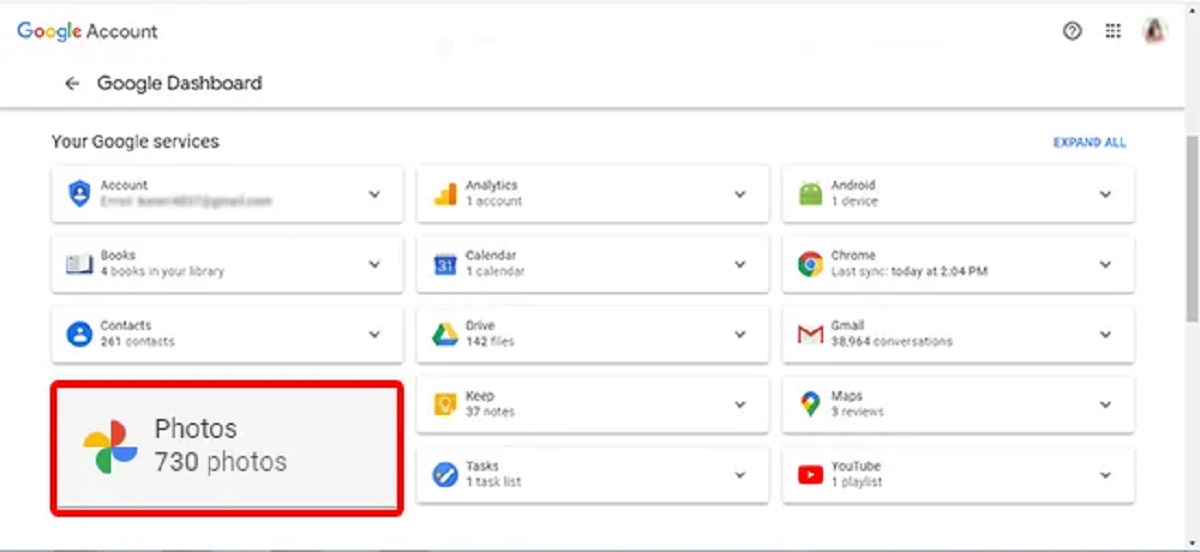

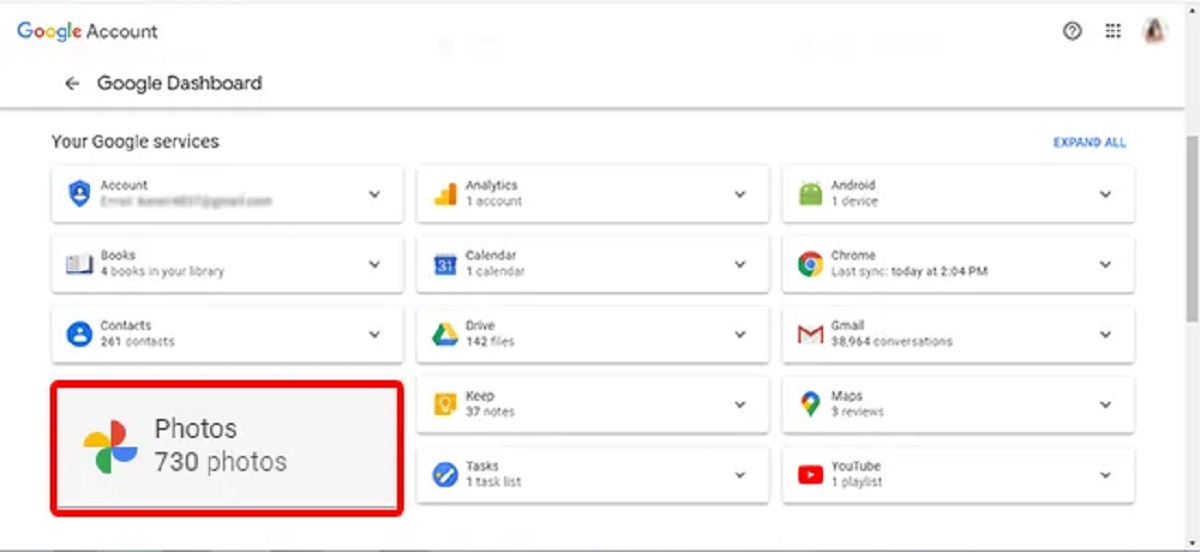
![20 Best Productivity Apps to Get Things Done [PC & Mac]](https://robots.net/wp-content/uploads/2020/05/write-593333_1920-300x177.jpg)
